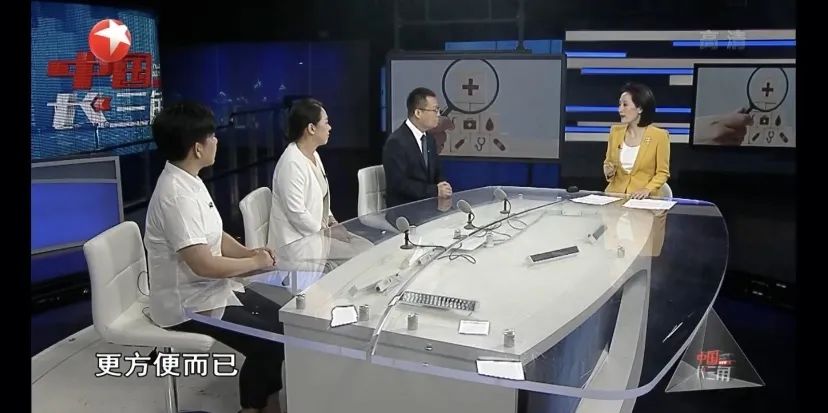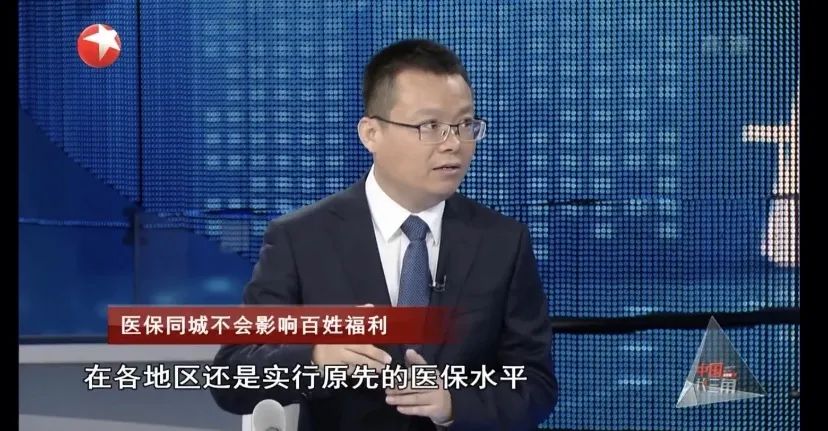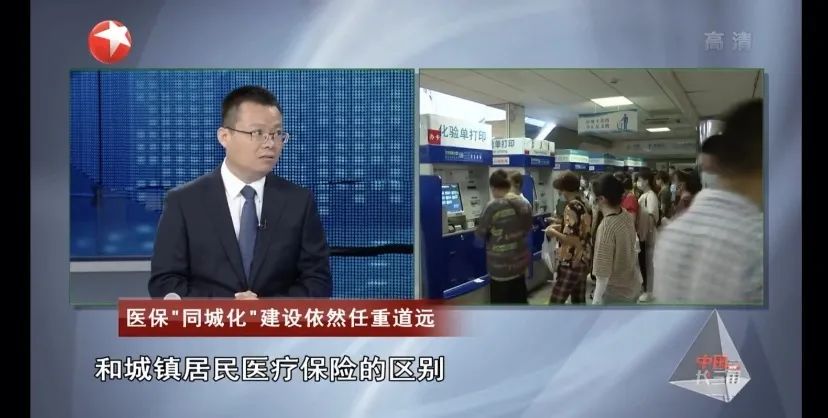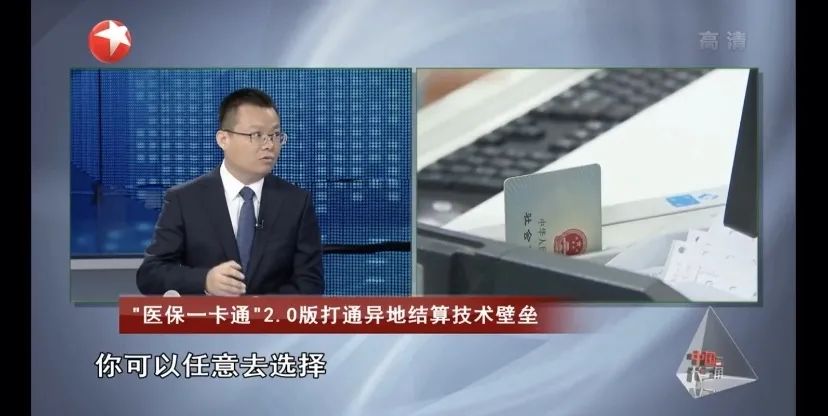上海交大赵大海关于新冠疫情第49次在电视台访谈评论:长三角示范区医保一体化取得重要进展
上海交通大学国际与公共事务学院博士生导师、上海交通大学-耶鲁大学卫生政策联合研究中心执行主任赵大海,自新冠肺炎疫情暴发以来,对于新冠疫情暴发、防控以及医疗卫生体制改革第19次在上海电视台进行访谈评论,也是第49次在央视、上视进行访谈评论。在2020年9月6日,赵大海做客上海电视台演播厅,在东方卫视《中国长三角》节目,就长三角医疗保障制度一体化改革进程进行了访谈评论。同期演播室嘉宾还有长三角示范区执委会公共服务和社会发展组组长曹雪娟,嘉善县医保中心主任邹萍。现仅将关于赵大海的访谈内容摘录如下。
主持人:对于长三角的上海青浦、江苏吴江和浙江嘉善的“两区一县”示范区的医保改革,看上去对老百姓来说是它减少了一个程序,更方便而已;但事实上对于所有的相关部门和后台操作来说的话,它是已经把先前可能阻碍这个异地结算的很多技术性的问题,甚至包括政策性的一些问题都已经解决掉了,对吧?
赵大海:是的。目前在两区一县医保的异地结算与原本的备案制相比较,有本质的区别。原先需要备案的时候,一般情况下只可以到备案的某一个定点医疗机构去就诊;但现在公众可以在两区一县的所有80多所医疗机构当中任意选择;原先需要备案的时候,对于异地结算的所有程序是没有办法破解的;现在我们至少是在这两区一县把所有影响异地结算的程序和障碍都克服了。
主持人:刚刚在分析示范区医保2.0版本的时候,其实我就在想,各地会不会也有一些担心,比如老百姓说,各地的医保水平可能会不太一样,那我们同城化,或者异地一体化结算了之后,会影响每个地方的老百姓实际的获得吗?
赵大海:现在我们并没有实现统一的医保水平,在各地区还是实行原先的医保水平,因此现在的政策是没有动筹资,这个是最难动的地方。现在我们选择了一条比较可行的、障碍相对比较小的医保改革道路。因此,目前而言是没有影响到老百姓的真正负面的方面,主要还是提供了方便;对老百姓而言就是方便,另外没有降低他们的福利。
主持人:我们也注意到了上海的医保部门已经给出了自己的一个态度,刚刚说了要实施统一的医疗保障的政策,包括统一药品的目录,还有统一诊疗项目目录等,当然实际意义很大,但是也很难,所以也想听听您的观点,难在哪儿?
赵大海:最难的地方就在于各地区的医保筹资水平有很大差异。另外,我们还有城镇职工医疗保险和城镇居民医疗保险的区别,因此要真正实现医疗目录的完全统一,以及未来如果能实现报销比例的完全统一,实现全国每一个人的医疗保障水平是一样的,应该还需要比较长的路要走。
主持人:您刚才也说了这个全国范围,如果再往深里,这个医保一体化的改革要去走,这个相对会难一点。那么这个示范区医保改革2.0版,您觉得在示范区已经示范了,它能不能在更大的范围被复制推广一下?
赵大海:现在的这个示范区2.0版本,应该是具有非常好的可复制性。为什么呢,因为他没有触动筹资,它主要解决的是技术问题。在这个前提下,可以为全国的所有地区提供非常好的借鉴。也就说,在不触及核心障碍的前提下,在技术上是完全可以将不同地区的医保目录,特别是把所有的参保人全部整合在一个系统当中;在这个前提下,全国的老百姓应该马上就可以享受到医保异地结算的便利。
供稿者:国务学院
日期:2020年9月7日
Dahai Zhao' 49th comments on TV during the Pandemic: Significant Progress Has Been Made in the Integration of Medical Insurance in the Yangtze River Delta Demonstration Zone
Dahai Zhao, a doctoral supervisor at School of International and Public Affairs of Shanghai Jiao Tong University and Executive Director of Shanghai Jiao Tong University-Yale University Joint Research Center for Health Policy, has been interviewed by ShanghaiTV for the 19th time (the 49th time by CGTN / ShanghaiTV) since the COVID-19 pandemic. On September 6, 2020, Zhao commented on significant progress has been made in the integration of medical insurance in the Yangtze River Delta Demonstration Zone on “Yangtze River Delta” of ShanghaiTV. At the same time, the studio guests included Cao Xuejuan, head of the Public Service and Social Development Group of the Executive Committee of the Yangtze River Delta Demonstration Zone, and Zou Ping, director of the Jiashan County Medical Insurance Center.The following is an excerpt of the interview with Zhao Dahai.
Anchor: Regarding the medical insurance reform in the "Two Districts and One County" demonstration zones in Shanghai Qingpu, Jiangsu Wujiang and Jiashan, Zhejiang in the Yangtze River Delta, it seems that it reduces one procedure and is more convenient for the common people; but in fact it is more convenient for all As far as the relevant departments and back-office operations are concerned, it has solved many technical problems that may have hindered this remote settlement, and even some policy problems, right?
Zhao: Yes. Compared with the original filing system, the remote settlement of medical insurance in the two districts and one county is essentially different. When the record was originally required, under normal circumstances, only one designated medical institution for the record can be treated; but now the public can choose among all the more than 80 medical institutions in two districts and one county; There is no way to crack all settlement procedures; now we have overcome all procedures and obstacles that affect settlement in other places at least in these two districts and one county.
Anchor: When I was analyzing the medical insurance version 2.0 in the demonstration area, I was actually thinking whether there would be some concerns in various places. For example, the common people said that the medical insurance level in different places may be different, so we should be in the same city or integrated in different places. After the settlement is settled, will it affect the actual gains of the people everywhere?
Zhao: At present, we have not achieved a unified level of medical insurance. The original level of medical insurance is still implemented in various regions. Therefore, the current policy does not raise funds. This is the most difficult place to move. Now we have chosen a more feasible path of health insurance reform with relatively small obstacles. Therefore, at present, it does not affect the real negative aspects of the people, but mainly provides convenience; for the people, it is convenience, and in addition, it does not reduce their welfare.
Anchor: We have also noticed that the Shanghai medical insurance department has already given an attitude of its own. It just said that it will implement a unified medical insurance policy, including a unified drug catalog, and a unified diagnosis and treatment item catalog. Of course, the practical significance is very high. It's big, but it's also difficult, so I want to hear your point of view, what's the difficulty?
Zhao: The most difficult part is that the level of financing of medical insurance varies greatly from region to region. In addition, we still have the difference between urban employee medical insurance and urban resident medical insurance. Therefore, we must truly realize the complete unification of the medical catalog, and if we can achieve complete unification of the reimbursement ratio in the future, the level of medical insurance for everyone in the country will be the same. It should take a long way to go.
Anchor: You just mentioned the nationwide scope. If you go deeper, the reform of the integration of medical insurance is going to be relatively difficult. So, the 2.0 version of the medical insurance reform in the demonstration zone, do you think it has been demonstrated in the demonstration zone, can it be replicated and promoted in a larger scale?
Zhao: The current 2.0 version of the demonstration zone should be very reproducible. Why, because he didn't touch fundraising, it mainly solved technical problems. Under this premise, it can provide a very good reference for all regions of the country. In other words, under the premise of not touching the core obstacles, it is technically possible to integrate the medical insurance catalogs of different regions, especially all the insured persons in a system; under this premise, the people of the country should You can immediately enjoy the convenience of medical insurance settlement in different places.
Contributor: SIPA, SJTU
Data: September 7, 2020

